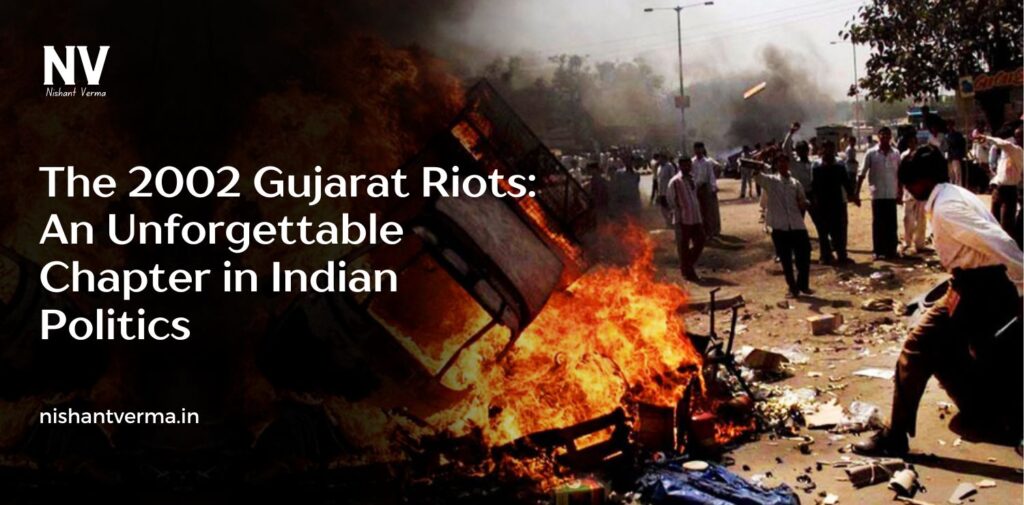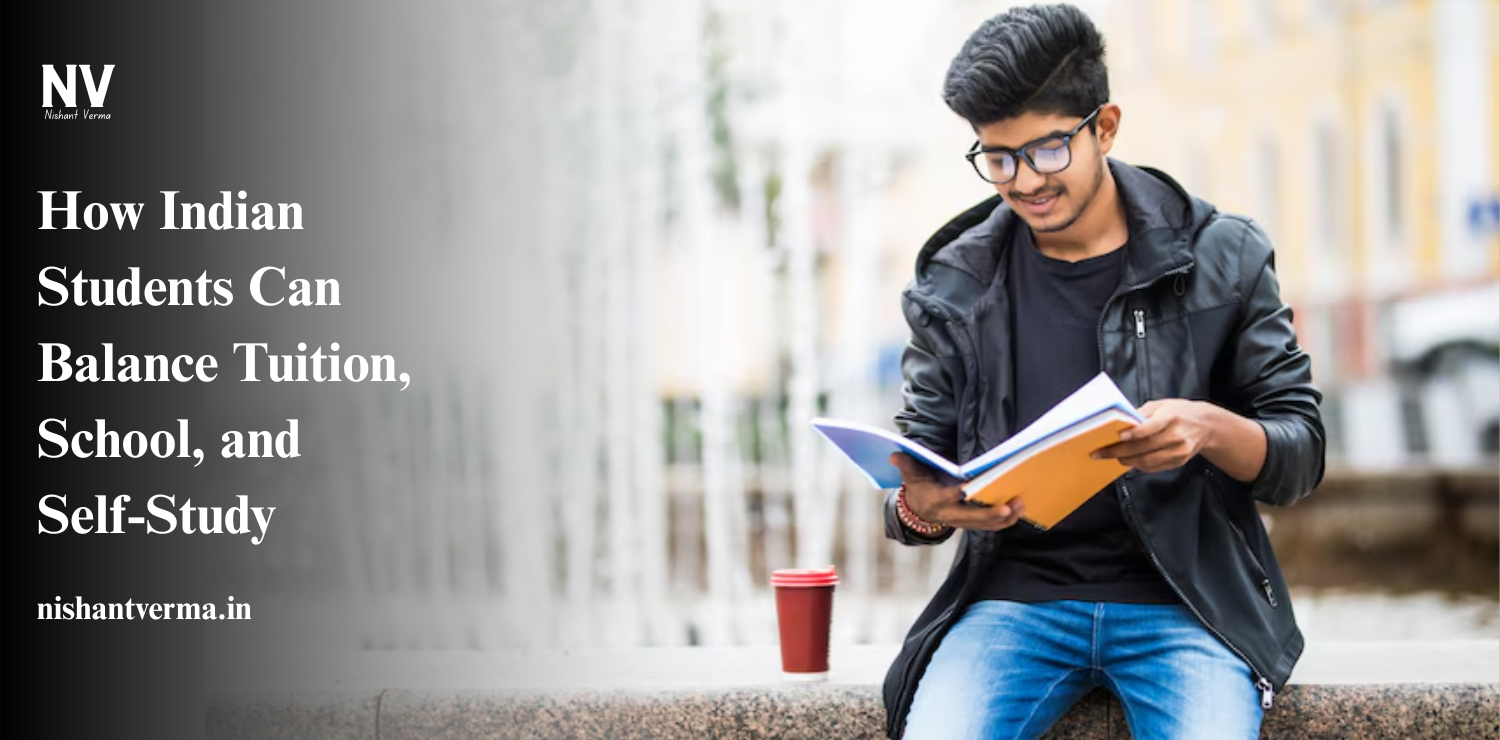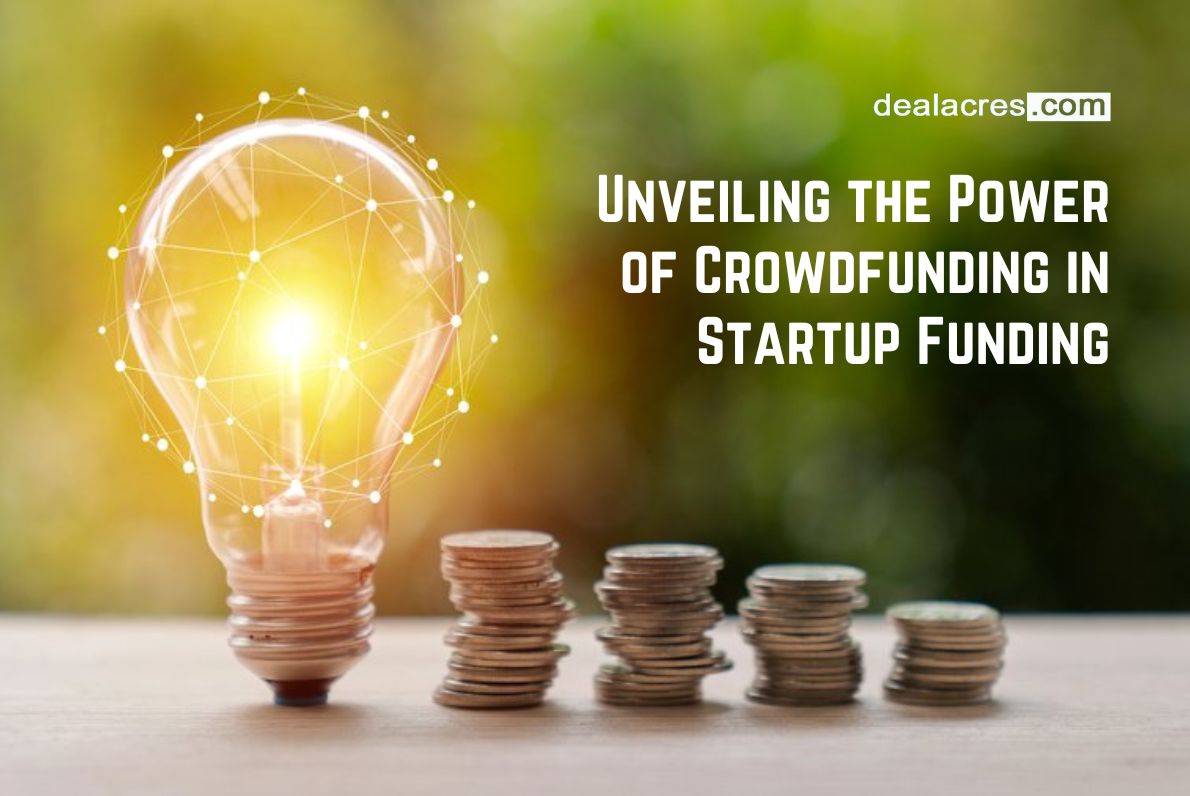The 2002 Gujarat riots remain one of the darkest chapters in India’s post-independence history. The violence and its aftermath had profound impacts on the state’s politics, the nation’s social fabric, and the image of its political leadership. While the riots themselves were a tragic human tragedy, they also played a pivotal role in shaping the political landscape of India, especially in Gujarat. This article aims to provide a detailed yet simple understanding of the 2002 Gujarat riots, the causes behind them, the key events that unfolded, and the lasting impact on Indian politics.
The Trigger: Godhra Train Attack
The violence in Gujarat in 2002 was triggered by an incident that took place on February 27, 2002, in the small town of Godhra. A train carrying Hindu pilgrims returning from the Kumbh Mela in Uttar Pradesh was attacked by a mob. The train, which was at the Godhra railway station, was set on fire, and 59 people, including women and children, lost their lives in the attack.
The Godhra train incident became the spark that ignited the violence. The attack was blamed on Muslim extremists, and in the aftermath, there was a call for revenge from several sections of the Hindu community. The violence, however, quickly spread beyond the train incident and turned into widespread communal riots across the state of Gujarat.
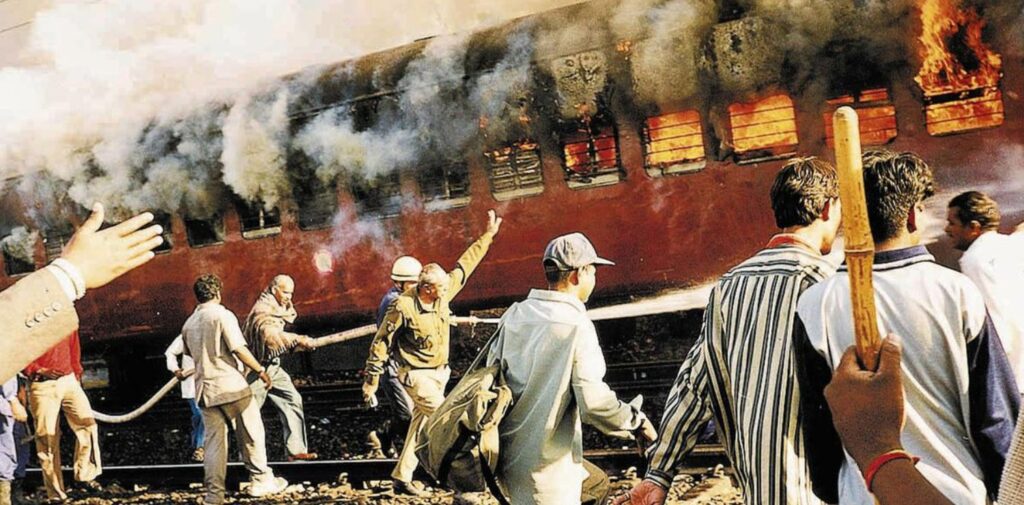
The Riots: A Statewide Wave of Violence
In the days following the Godhra incident, communal violence broke out in various parts of Gujarat, particularly in cities like Ahmedabad, Vadodara, and Surat. Rioters targeted Muslim homes, businesses, and mosques, and the violence quickly escalated into one of the worst communal riots in India’s history.
1. Widespread Attacks on Muslims
Thousands of Muslim homes, shops, and properties were attacked and burned. Many people were killed, and women and children were brutally assaulted. The violence was not confined to just one or two locations but spread across multiple districts. Several reports indicate that the violence was coordinated, with some alleging that the police and even political leaders had a role in fueling the flames of communal discord.
2. Role of the Police and Government
One of the most controversial aspects of the Gujarat riots was the alleged involvement of the state government led by Chief Minister Narendra Modi at the time. Critics have pointed out that the police did not act swiftly to control the violence and were even accused of turning a blind eye or being complicit in the attacks. The lack of intervention by authorities led to widespread anger and distrust in the state’s administration.
While Modi’s government consistently denied any involvement in the violence, reports from various human rights organizations, such as the National Human Rights Commission, pointed to lapses in the police’s response and inadequate measures to stop the violence. This created a deeply polarized narrative around the state’s role in the riots.
3. The Impact on Innocent Lives
The human cost of the riots was devastating. Official estimates suggest that over 1,000 people lost their lives, with the majority being Muslims. The violence left many families displaced, with thousands forced to flee their homes. The economic impact was also severe, as businesses, particularly those owned by Muslims, were targeted and destroyed.
The loss of life and livelihood, coupled with the trauma and fear experienced by many communities, left deep scars that are still felt today. The riots not only caused physical damage but also created long-lasting psychological and emotional trauma for many survivors.
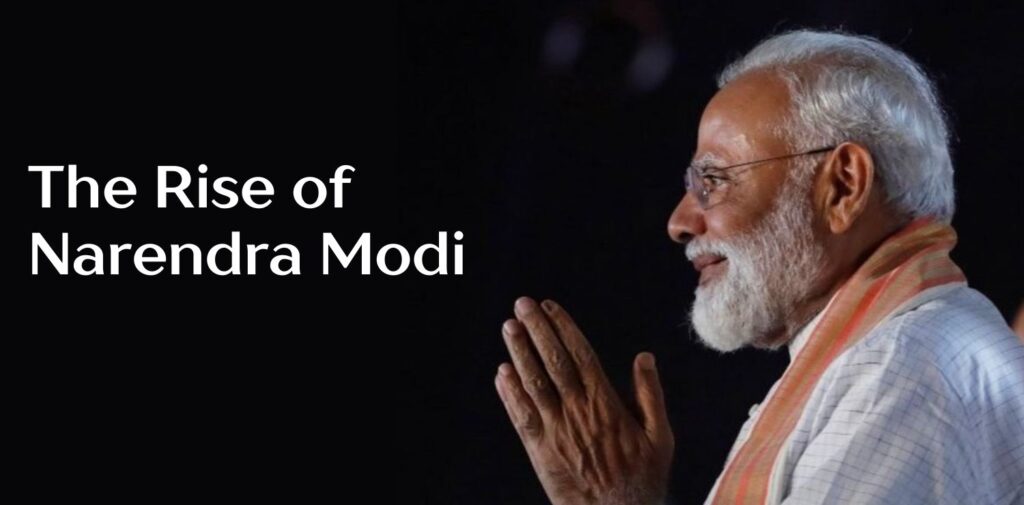
Political Fallout: The Rise of Narendra Modi
One of the most significant outcomes of the 2002 Gujarat riots was the political transformation of Narendra Modi, who was the Chief Minister of Gujarat at the time. Despite the widespread allegations of his administration’s failure to prevent or control the violence, Modi’s political fortunes rose dramatically in the years that followed.
1. Modi’s Political Reinvention
Narendra Modi’s leadership during the riots became a highly controversial topic. While many accused him of being complacent or even complicit, Modi and his supporters argued that his government worked hard to restore order after the violence, despite challenges. His government also pointed to the fact that Gujarat had rapidly recovered economically in the aftermath of the riots, which helped him build a narrative of “development” and “good governance.”
In the years following the riots, Modi distanced himself from the allegations and focused on building a pro-business, development-oriented image. He successfully communicated his message of economic growth, infrastructure development, and stability to the people of Gujarat, winning re-election as Chief Minister in 2002 and again in 2007.
2. The National Stage
Modi’s rise was not confined to Gujarat alone. By the time of the 2014 national elections, Modi had become a prominent figure in Indian politics. His emphasis on “development” overshadowed the dark chapter of the 2002 riots, and his narrative of strong leadership won him widespread support, eventually leading to his victory in the 2014 Indian general elections and his subsequent tenure as the Prime Minister of India.
However, the shadow of the 2002 riots has never fully left him. His critics, both within India and internationally, continue to bring up his handling of the riots. Despite this, Modi’s ability to navigate through this controversy and focus on economic and governance issues has made him one of the most influential leaders in India.
Judicial Trials and Accountability
One of the most important aspects of the aftermath of the Gujarat riots was the question of justice for the victims. Over the years, several cases related to the riots were taken to court, and many accused the Gujarat government of not doing enough to bring the perpetrators to justice.
1. Court Cases and Convictions
The judicial response to the Gujarat riots has been slow, and there have been concerns about bias in the investigation and trials. Some high-profile cases did eventually result in convictions, but many accused of inciting violence were either acquitted or not prosecuted.
The Supreme Court of India also intervened in the matter by transferring several cases outside Gujarat to ensure a fair trial. The court directed the special investigation team (SIT) to investigate various aspects of the riots. In 2012, a special SIT report cleared Narendra Modi of any wrongdoing, although many victims and human rights activists continue to feel that justice has not been adequately served.
2. Continued Struggle for Justice
For the victims of the 2002 riots, the struggle for justice continues even today. Many survivors are still waiting for full accountability for the violence and the destruction they experienced. Social organizations and human rights groups continue to work on behalf of the victims, seeking reparations and a complete investigation into the role of political leaders and law enforcement during the riots.
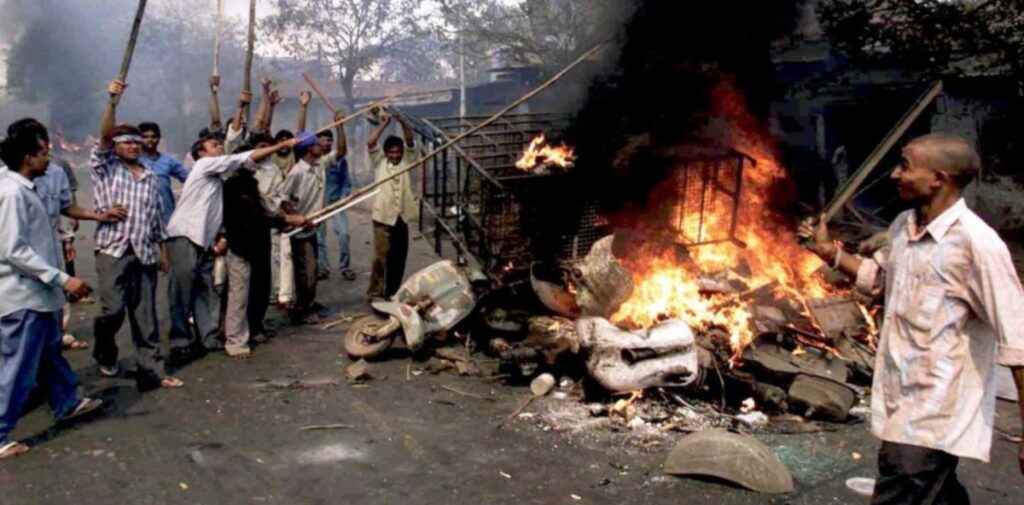
Long-Term Effects on Society
The 2002 Gujarat riots left a deep and lasting impact on the social and political landscape of India. The most significant long-term effects of the riots include:
1. Deepening Communal Divide
The violence of 2002 fueled a growing communal divide between Hindus and Muslims in Gujarat, and to some extent, in other parts of India. The events exacerbated existing tensions, with many people viewing the riots through the lens of religious polarization. The distrust and fear between communities continue to affect the social fabric in some parts of the country.
2. Impact on Indian Politics
The Gujarat riots also altered the course of Indian politics, particularly in terms of how the country viewed issues related to religious identity and governance. The handling of the riots and the subsequent rise of Narendra Modi have led to a growing debate on the role of religion in politics, especially as parties like the Bharatiya Janata Party (BJP) have gained significant support by appealing to Hindu voters.
3. International Repercussions
The Gujarat riots attracted international criticism, especially from countries like the United States and the United Kingdom, which raised concerns about the state government’s handling of the situation. Narendra Modi was denied visas to some Western countries for a period, although this stance changed in later years.
Conclusion: The 2002 Gujarat Riots
The 2002 Gujarat riots are a painful reminder of the complexities and challenges of managing communal relations in a diverse country like India. The violence, the failure of the state apparatus, the struggle for justice, and the political ramifications of the riots have left deep scars in Gujarat’s social and political landscape. While the passage of time has helped the state recover economically, the emotional and psychological wounds of the riots continue to affect many families and communities.
The 2002 riots were a pivotal moment in Indian politics, shaping the rise of Narendra Modi and the political discourse on issues of governance, identity, and secularism. The lessons from this dark chapter still resonate today, as India continues to grapple with the balance between unity and diversity, and the importance of justice and accountability in the face of violence.

